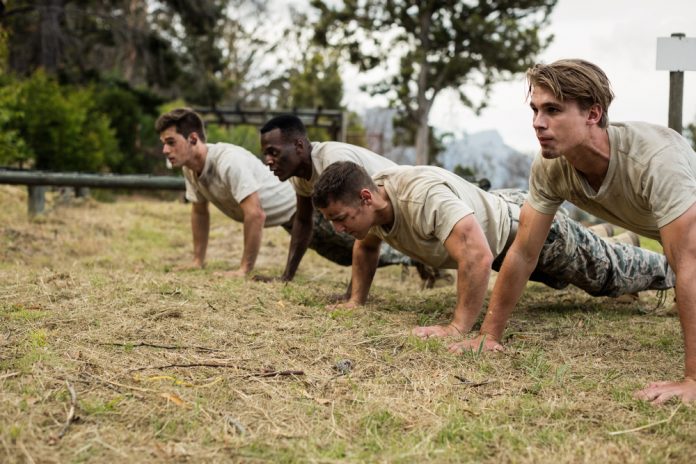
During his spring 1943 first campaign command in North Africa, Lieutenant General George S. Patton was called upon to whip a demoralized and defeated U.S. Army into shape in two weeks. The situation he was handed was the result of inept leadership, leaving Patton to implement abrasive and sometimes hostile tactics to invigorate his troops for their next battle. Many would criticize his techniques, but few could question the results that “Old Blood and Guts” accomplished against the superior German Afrika Korps.
Although many of his actions would not be acceptable in today’s business world, the underlying traits of strength training techniques are evident.
Leading from the front
Patton was on the front lines continually during the North Africa campaign. The man he was replacing, Lieutenant General Lloyd Fredendall, had previously issued campaign orders from a bomb-proof bunker a hundred miles away from the front-line action, many of these directives so vague that other generals were left bewildered.
Patton was evident in his intentions and demonstrated them regularly. His drivers were made to boldly—and recklessly—press forward beyond safety boundaries to inspire his men. His dress signified his aggressive nature: on his side were a pair of ivory-handled Colt pistols, and his general’s stars were prominently displayed on his helmet, jacket, and command vehicles. He stood out as a prime target for snipers but never wavered.
“He believed in seeing and in being seen,” one tank destroyer battalion commander recalled of Patton.
Expectation and Inspection
Old Blood and Guts routinely surveyed his troops in the build-up to frontline action. He profanely made examples of those who did not fit the spit-and-polish model he expected of his followers. His men knew exactly what was expected of them and the consequences of not following these guidelines. He hit them in the pocketbook with fines or even time in the brig if they were improperly uniformed or unshaven.
Patton replaced leaders he deemed incapable of following his directives expediently. During inspections of artillery and infantry troops, he specifically called out where guns should adequately be placed and men should be deployed.
In defense of his aggressive style, Patton stated, “If men do not obey orders in small things, they are incapable of being led into battle. I will have discipline.”
Setting Goals
On March 24, Patton ordered his 1st Armored Division leader, Major General Orlando “Pinky” Ward, to push forward to capture a set of hills without delay. He demanded that officers lead the offensive to the point that some of them be killed, just to make his point. Patton made his goals clear and insisted that unit commanders lead their men into the harshest of environments. “You lead the attack personally,” he ordered Ward. “Don’t come back ‘til you get it.” Ward returned from the assault bloodied but having earned enough respect from Patton that he was pinned with a Silver Star for his leadership against a German emplacement.
Patton’s initiatives sometimes went against the short-term directives of his Allied superiors. But he had a long-range vision, sometimes overstepping boundaries to accomplish the big picture. For minor obstacles, such as Axis strongpoints in the hills, he utilized aggressive new tools, such as Lieutenant Colonel Bill Darby’s 1st Ranger Battalion, to gain new ground.
Lunch and Learn
Two days after taking command, Patton called all his divisional and brigade leaders on March 8 for dinner. He listened to what they had to say and then laid out his plans for moving forward. His senior leaders were thus afforded the benefit of hearing expectations directly from their supreme commander instead of receiving them in trickle-down memo fashion.
During the North Africa campaign, he often went to the front-line command posts to eat with the leading officers of that group. In one instance, he found an infantry leader sitting down to lunch far removed from his troops. Patton ordered the officer to stop eating and get out in front. To punctuate his point, the general had his driver steer right through a minefield, shrugging off the protests of others that he was going to get himself killed.
By late April 1943, when Patton was called to prepare for his next campaign and hand over the reigns to Omar Bradley, his men had turned the tide against German and Italian forces near El Guettar in Tunisia. He had charted a course for victory and whipped an ill-prepared army into shape. “I didn’t like him a bit in this world, but I had to respect him because he was a known fighter,” 101-year-old artillery veteran Hubert Edwards recently stated.
George Patton offered his proper army training, demonstrated his ability to get his hands dirty, and inspired men to believe that success was possible with the right mindset and proper front-line tactical training. Modern business leaders able to pick past some of Patton’s harsh mannerisms may benefit from the wisdom of this military leader’s ability to inspire people to accomplish goals.




